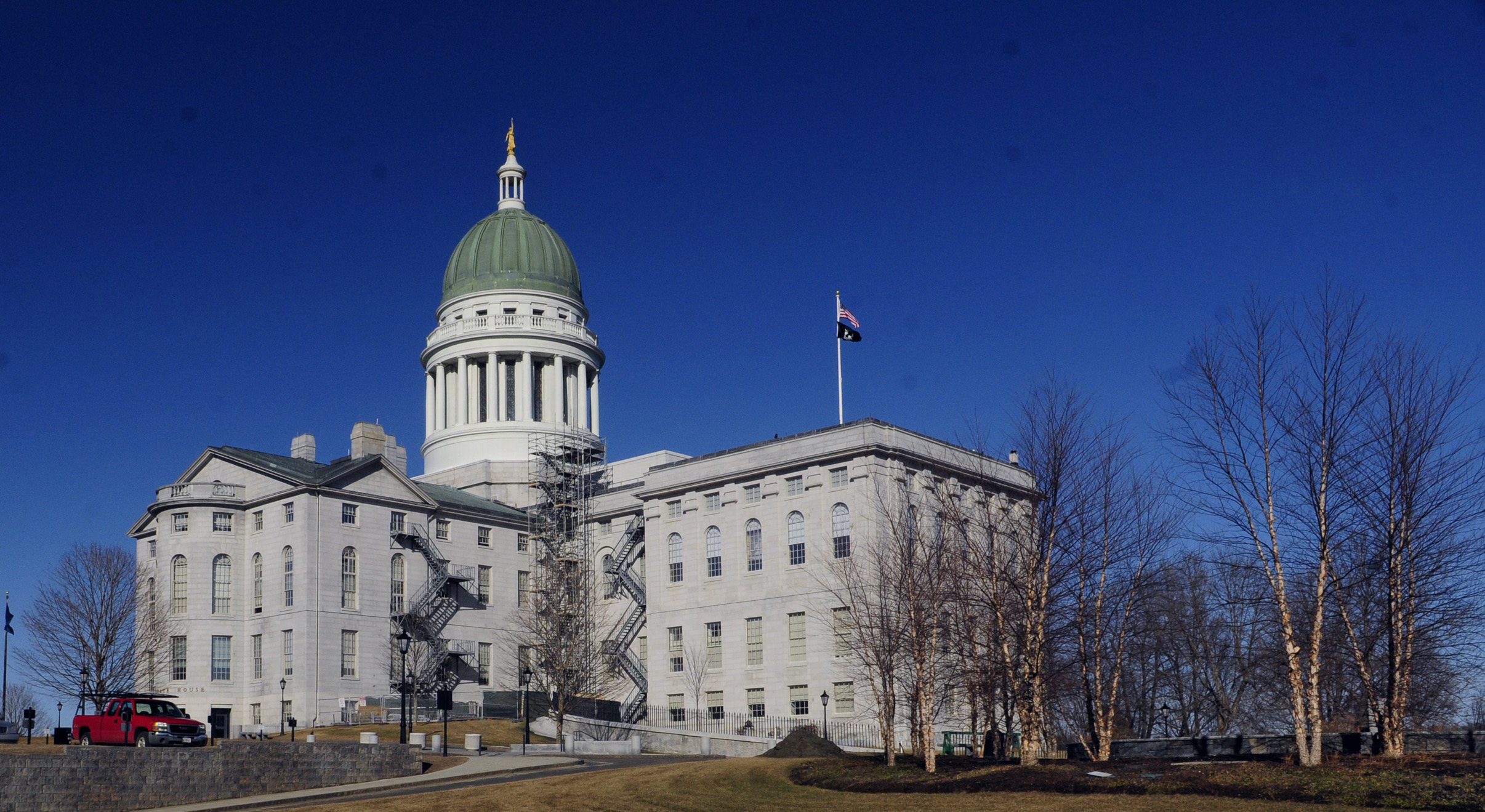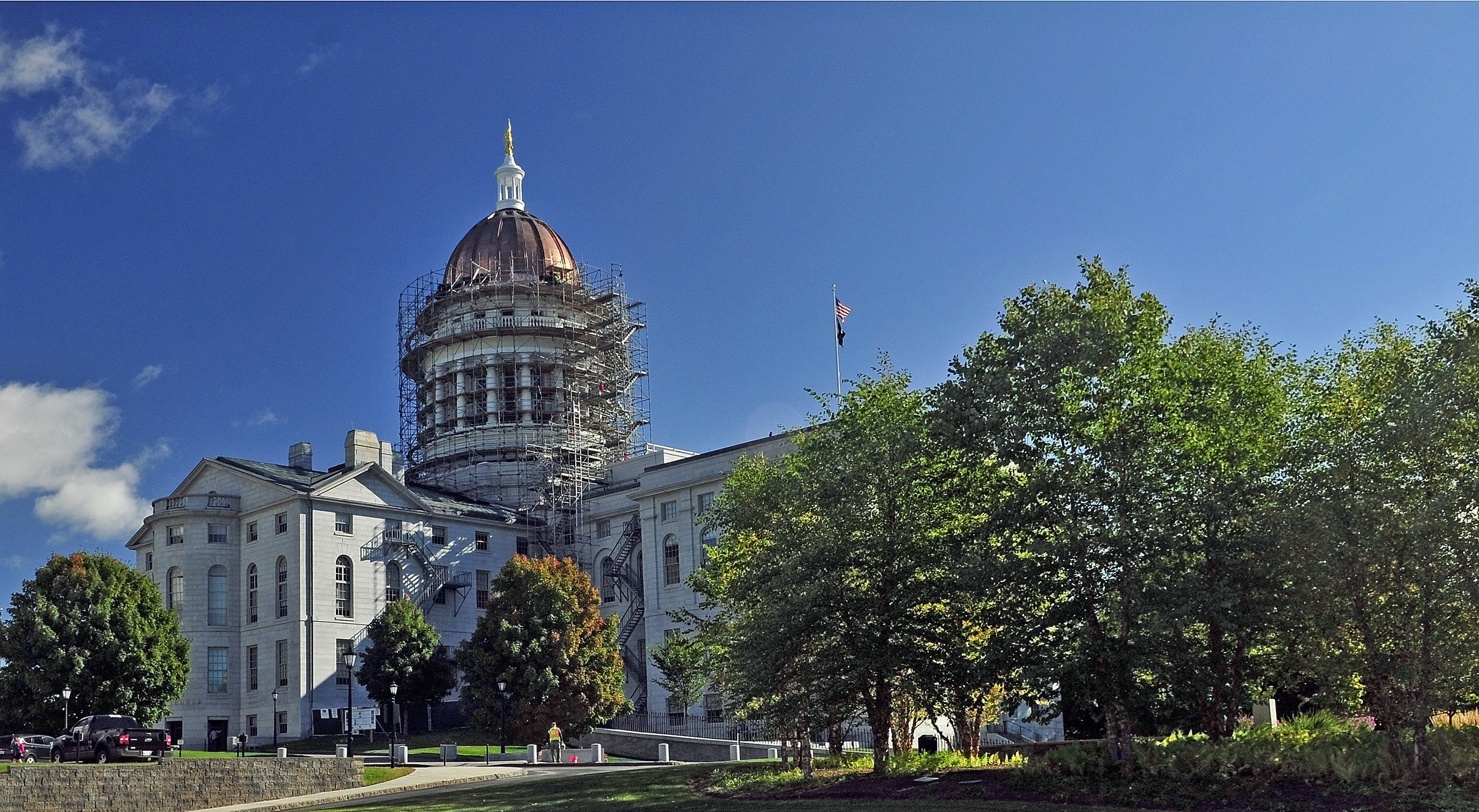AUGUSTA — Workers finished installing the State House dome’s new copper sheathing Wednesday soon after lawmakers approved a plan to use the century-old greenish copper removed from the dome for souvenirs and other artistic undertakings.
The entire $1.3 million dome restoration project won’t be completed until late November, but the bulk of the work is done.
The Legislative Council approved a plan crafted with the help of the Maine Arts Commission that calls for using portions of the roughly 6,500 square feet of copper to make commemorative souvenirs that will be sold to the public, selling some copper to jewelers or other artists, donating some to sculptors and reserving some to commission public art pieces using the copper.
The remaining copper will be sold as scrap. The state originally expected to sell all of the old copper to reduce the cost of the project, but legislative leaders reconsidered the plan after hearing interest from artists and other Mainers for the historical metal.
The group of legislative leaders voted Wednesday to accept the plan that includes buying back the copper from the contractor, Consigli Construction Co. The $21,242 needed to purchase the copper will be found in some type of cost savings, possibly from reserves for the project, said Suzanne Gresser, the council’s acting executive director. That total previously represented a cost reduction, so buying back the metal increases the project’s total cost, she said. The state also will need to pay to store the copper, which could cost around $2,500 for 18 months, according to the plan approved by the council.
Rep. Seth Berry, D-Bowdoinham, said the council will begin with the uses that will cost the least or will recoup money — the making of the commemorative souvenirs and the selling of sheets of the copper to artists. The estimated 600 square feet that will be sold for private art pieces is expected to net around $12,250, while the making of the souvenirs is expected to cost around $3,600, according to the plan.
Berry said the cost of the souvenirs probably is conservative, and the state could end up making money on that portion of the plan. The council will ask for proposals from artists to design the souvenir, he said.
The earliest that some form of the copper will be available to the public is probably early next year, Berry said.
The plan will be done in phases to ensure the council has the funds to do all of the options. The priciest use is the public art pieces for the State House Capitol Complex. The plan estimates the process of selecting and commissioning artists to create two pieces will cost $26,750. The plan also calls for 2,000 square feet of the copper to be donated to artists.
“I look forward to seeing what some of our most talented sculptors and metalsmiths can come up with as a way to memorialize this copper and these 107 years it represents in Maine history,” Berry said.
Some members of the council placed a time capsule in the roof Wednesday before workers finished enclosing the dome in the new copper. The capsule included a book of Maine laws, a legislative handbook, Tuesday’s Kennebec Journal, some of the old copper, and personal notes and pictures from some council members.
One of the artists interested in creating something with the copper, Andreas von Huene, said he’s grateful the lawmakers even considered using the metal for something other than just scrap.
Von Huene, a sculptor from Arrowsic, said he would like to build some type of sculpture at Viles Arboretum, which has a view of the Capitol from across the Kennebec River in Augusta. He envisions some type of walled garden with trees inside, and copper panels letting in some light through the pinholes and imperfections of the metal.
“I think it would be a nice thing, to make a visual connection as well as the tactile side of things, being able to touch something that was there,” von Huene said.
He said he can envision artists using the century-old copper for a variety of creative pieces.
“I think so many people would be interested in that, not just as a material but as a material with history,” von Huene said, “and the patina represents that and whatever shapes, forms, creases, dents, dimples come with that.”
Paul Koenig — 621-5663
Twitter: @paul_koenig
Send questions/comments to the editors.





Success. Please wait for the page to reload. If the page does not reload within 5 seconds, please refresh the page.
Enter your email and password to access comments.
Hi, to comment on stories you must . This profile is in addition to your subscription and website login.
Already have a commenting profile? .
Invalid username/password.
Please check your email to confirm and complete your registration.
Only subscribers are eligible to post comments. Please subscribe or login first for digital access. Here’s why.
Use the form below to reset your password. When you've submitted your account email, we will send an email with a reset code.